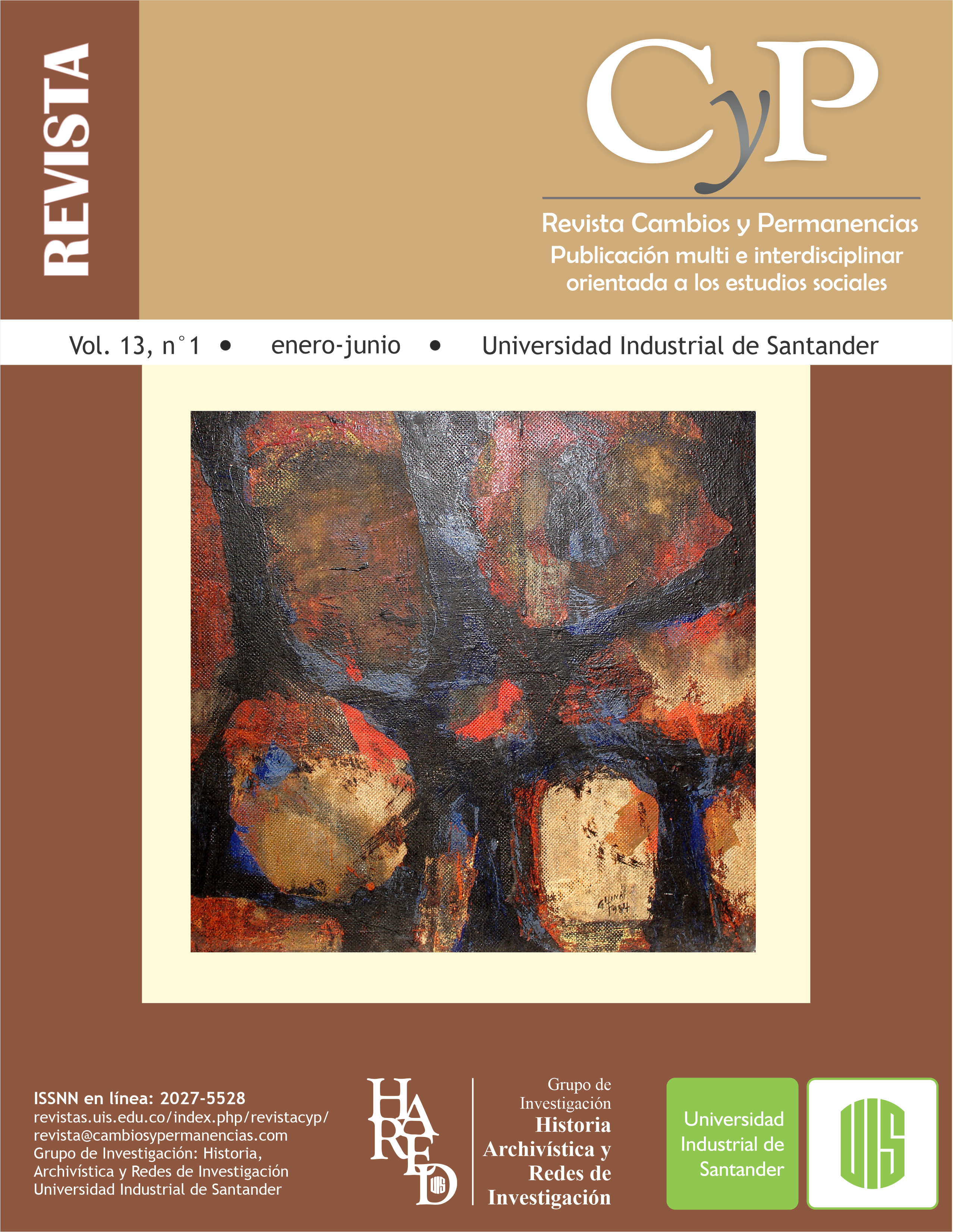Published 2022-06-05
Keywords
- Community(ies),
- Memories,
- Genocide,
- Extractivism,
- Recent Argentine History
How to Cite
Copyright (c) 2022 Revista Cambios y Permanencias

This work is licensed under a Creative Commons Attribution 4.0 International License.
Abstract
The stories of the memories lived during the military genocide in Argentina between 1976 and 1983, and its preparatory years between 1973 and 1976 show us the deep traces that state violence left imprinted on bodies and territories throughout the length and breadth of our country, as part of a continental genocidal plan. In this sense, the province of La Rioja was not exempt from this violence. We propose here that the violence deployed during the last dictatorial regime can be traced today as a continuity in the territories in conflict with governments and extractive companies, as in the case of La Rioja. The objectives of this text are to highlight the memories-testimonies of those who experienced genocidal violence in their own flesh and places of life and how they were able to build and continue sustaining community(ies) of care. The proposed approach is from an anti-extractivist feminist ethnography that puts into play my double ascription, as an assembly member and researcher, generating an intergenerational dialogue within the framework of Recent Argentine History.
Downloads
References
- Referencias
- Cabnal, L. (2013). Defender un territorio de la minería sin defender a las mujeres de la violencia sexual es incoherencia. Diagonal.
- D´Antonio, D. Y Eidelman. (2016). Diálogos y debates en la historia reciente argentina en K. Grammático (Ed.), Historia reciente, género y clase trabajadora: cinco estudios para pensar un problema de investigación.
- De la Fuente, A. y Flores Matzkin, A. (2017). El cuadernito azul. Editoria Cafure.
- Feierstein, D. (2011). Sobre conceptos, memorias e identidades: guerra y genocidio y/o Terrorismo de Estado en Argentina. Política y Sociedad, 48(3), 571-586. https://revistas.ucm.es/index.php/POSO/article/download/36417/36922/
- Haraway, D. (1995). Ciencia, cyborgs y mujeres. La reinvención de la naturaleza. Cátedra.
- Harvey, D. (2005). El “nuevo” imperialismo: acumulación por desposesión. CLACSO, http://biblioteca.clacso.edu.ar/clacso/se/20130702120830/harvey.pdf
- Jofré, C. y Gasetúa, F. (2022). Hacer comunidad en territorios de sacrificio en I. C. Jofré (Ed.), Cartografía de conflictos en territorios indígenas del Cuyum (región de Cuyo, Argentina). Editorial de la Universidad Nacional de San Juan (UNSJ).
- Korol, C. (Comp.). (2017). Diálogo de saberes y pedagogía feminista. Ediciones América Libre.
- Navarro Trujillo, M. L. (2015). Mujeres comuneras en la lucha por la reproducción de la vida ante el despojo capitalista: irradiaciones del pensamiento de Silvia Federici. Bajo el Volcán, 15(22), 79-90. https://www.redalyc.org/pdf/286/28642148006.pdf
- Rodríguez Agüero, L. y D ´Antonio, D. (2019). El carácter sexo-genérico de la represión estatal en la Argentina de la década del setenta.
- Walsh, R. (1977). Carta abierta a la Junta Militar. https://www.espaciomemoria.ar/descargas/Espacio_Memoria_Carta_Abierta_a_la_Junta_ Militar.pdf
- Audiovisual
- Gasetúa, F. (idea y realización). Ángel, M. (apoyo técnico). (2011). El norte famatinense durante el Terrorismo de Estado.
